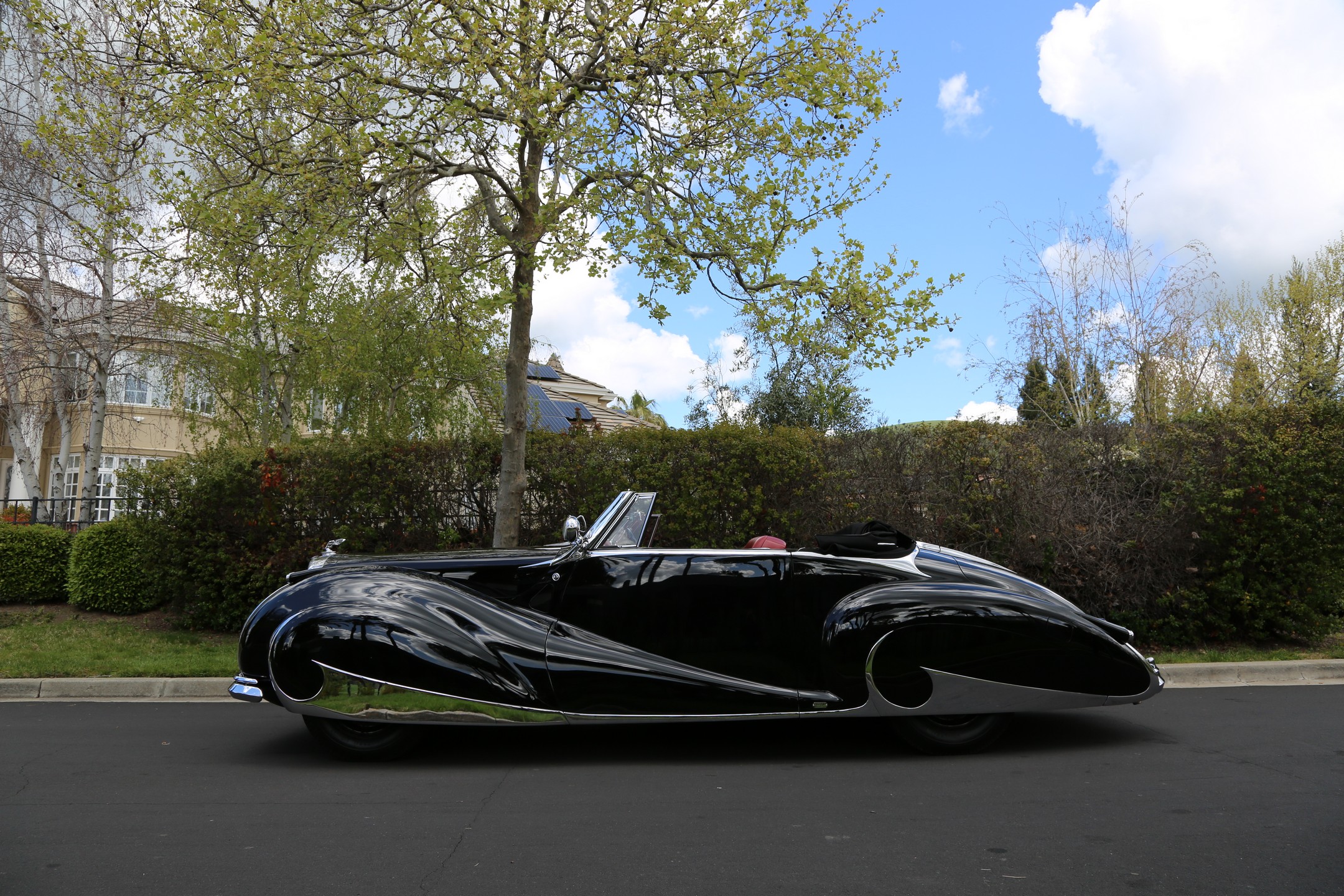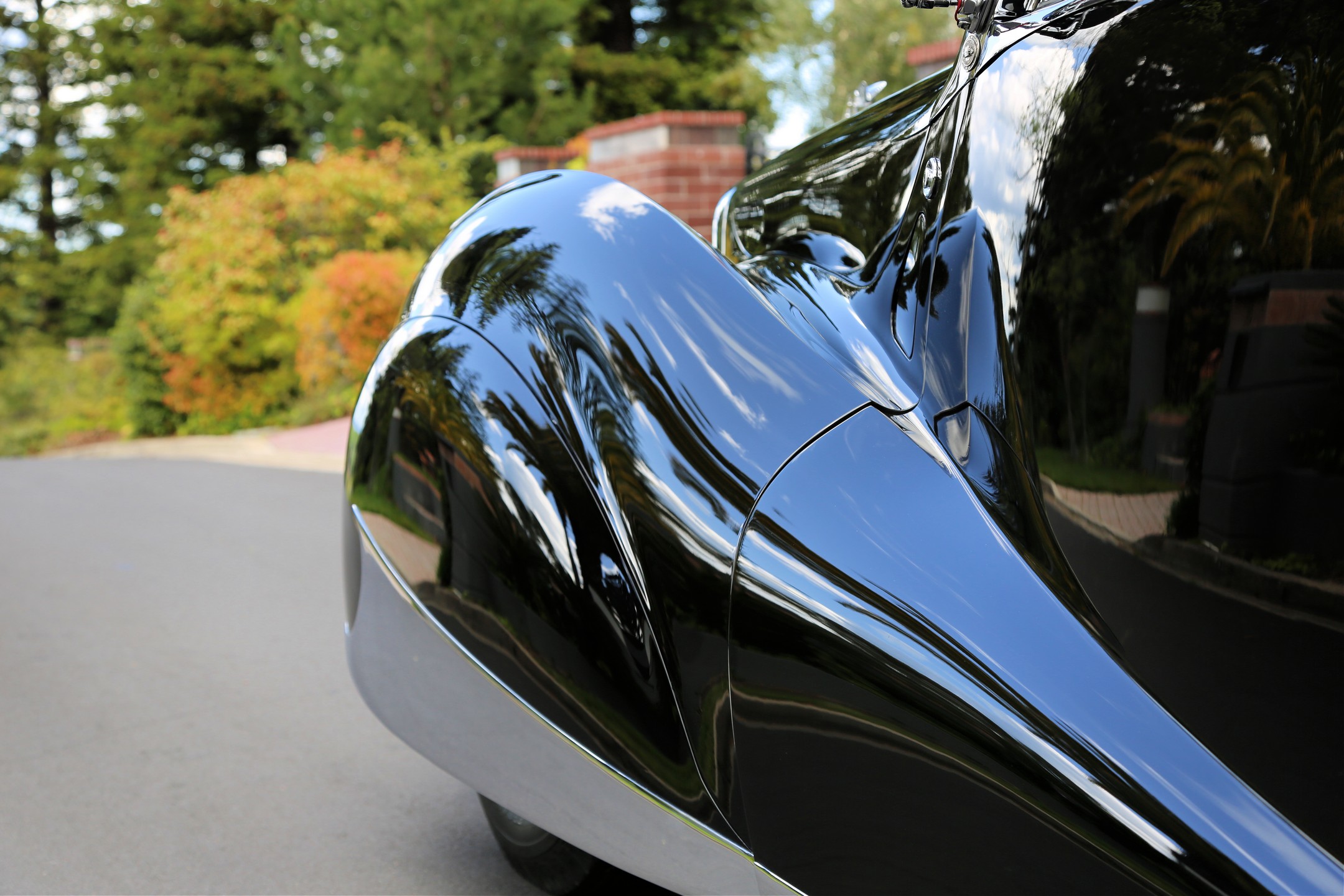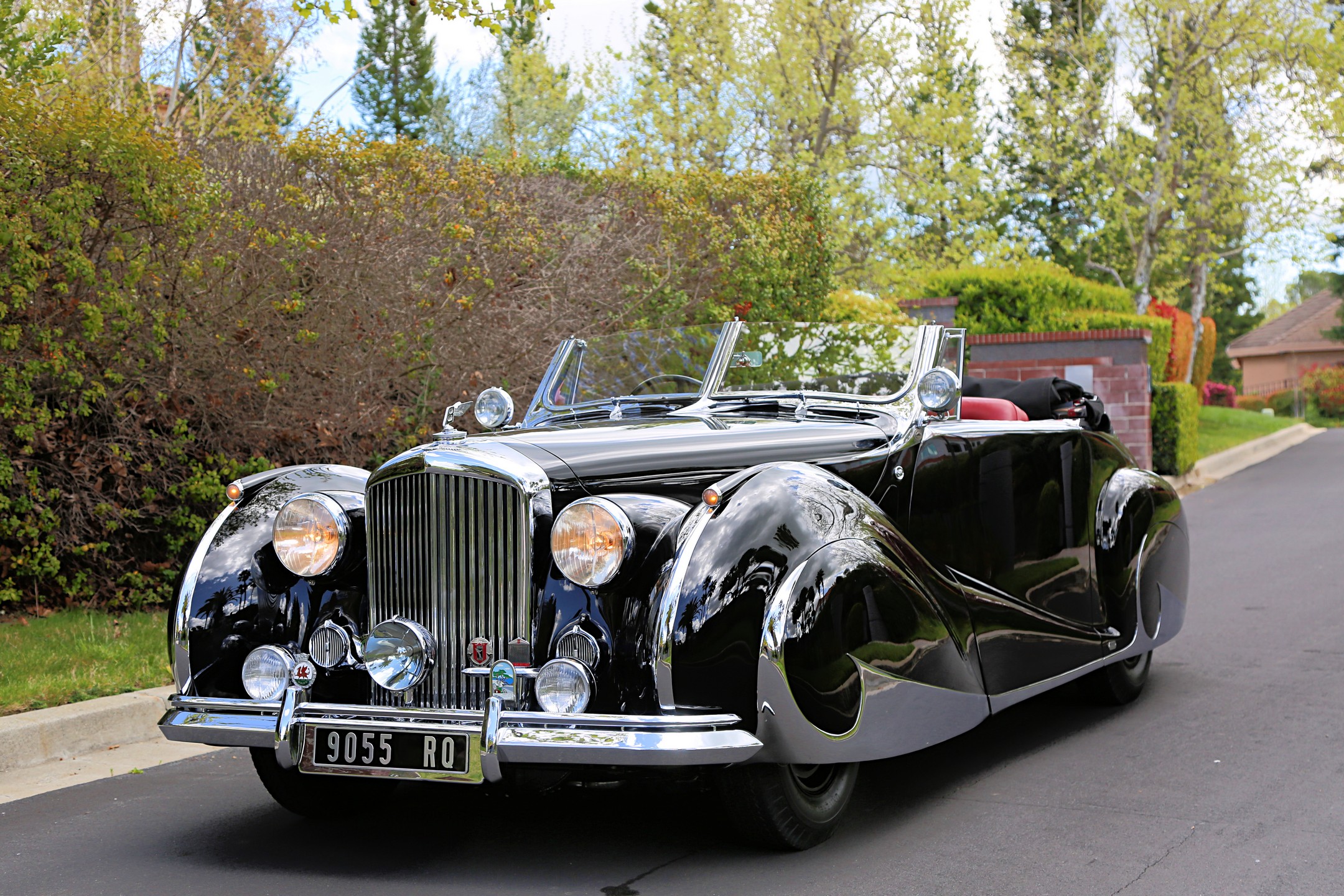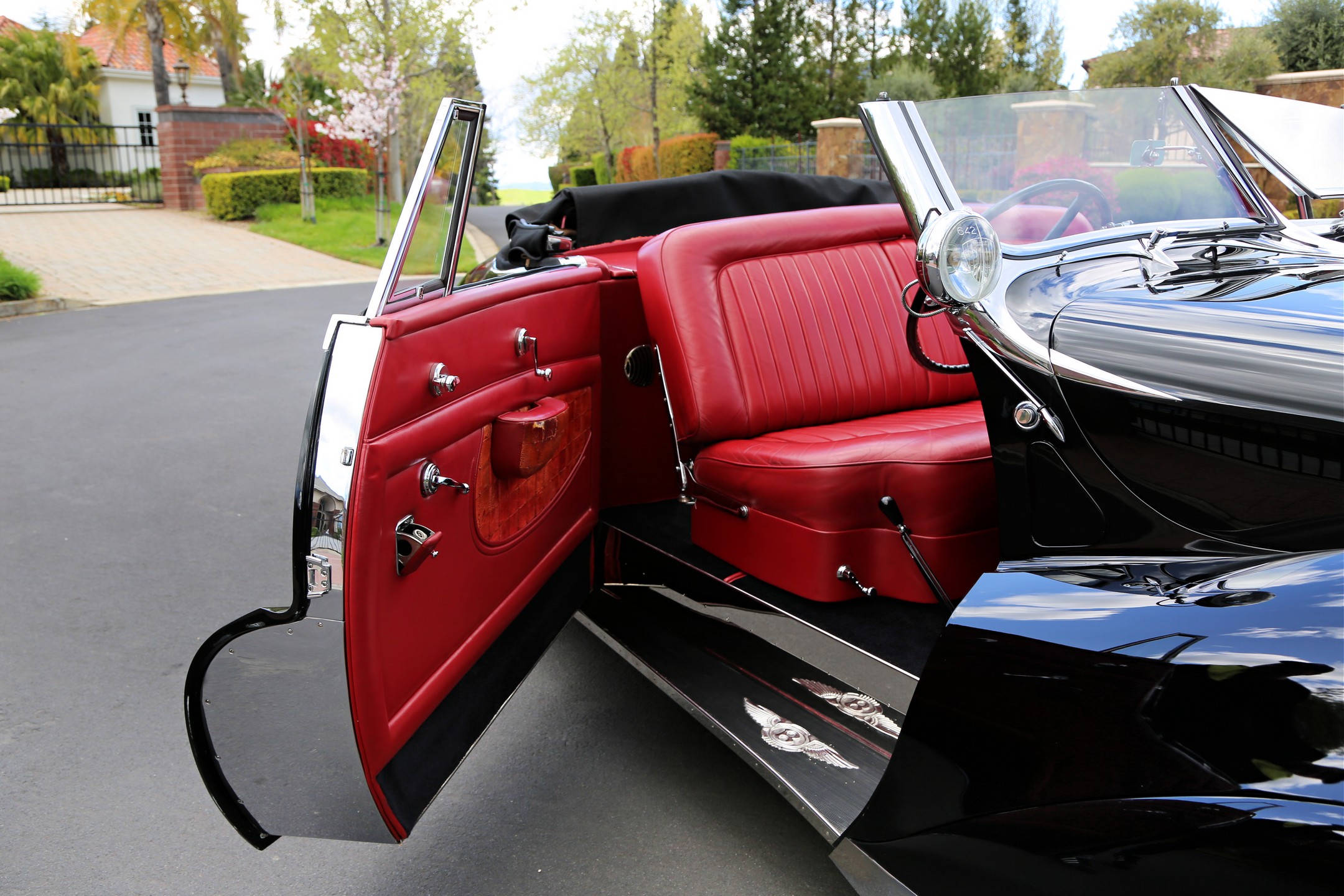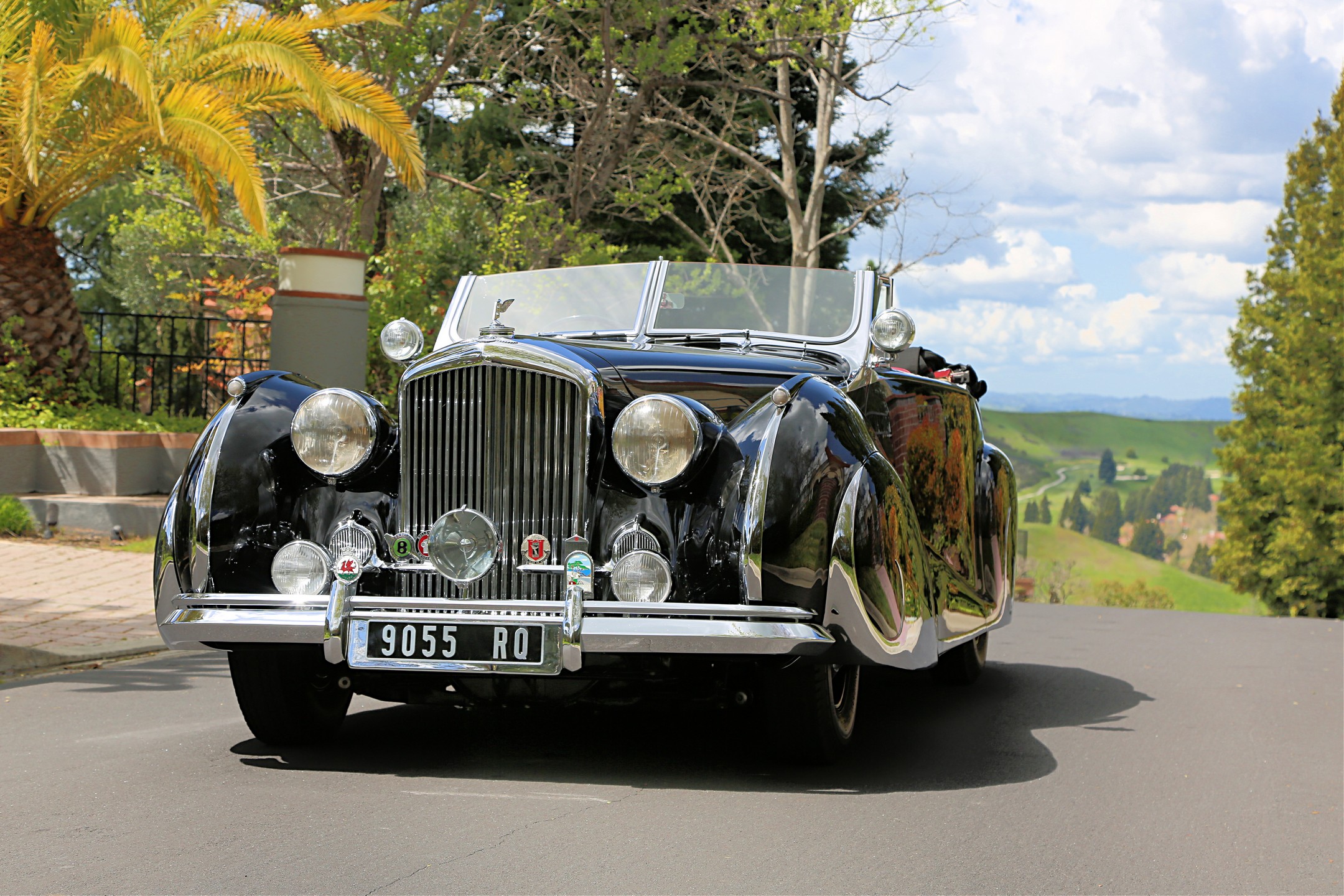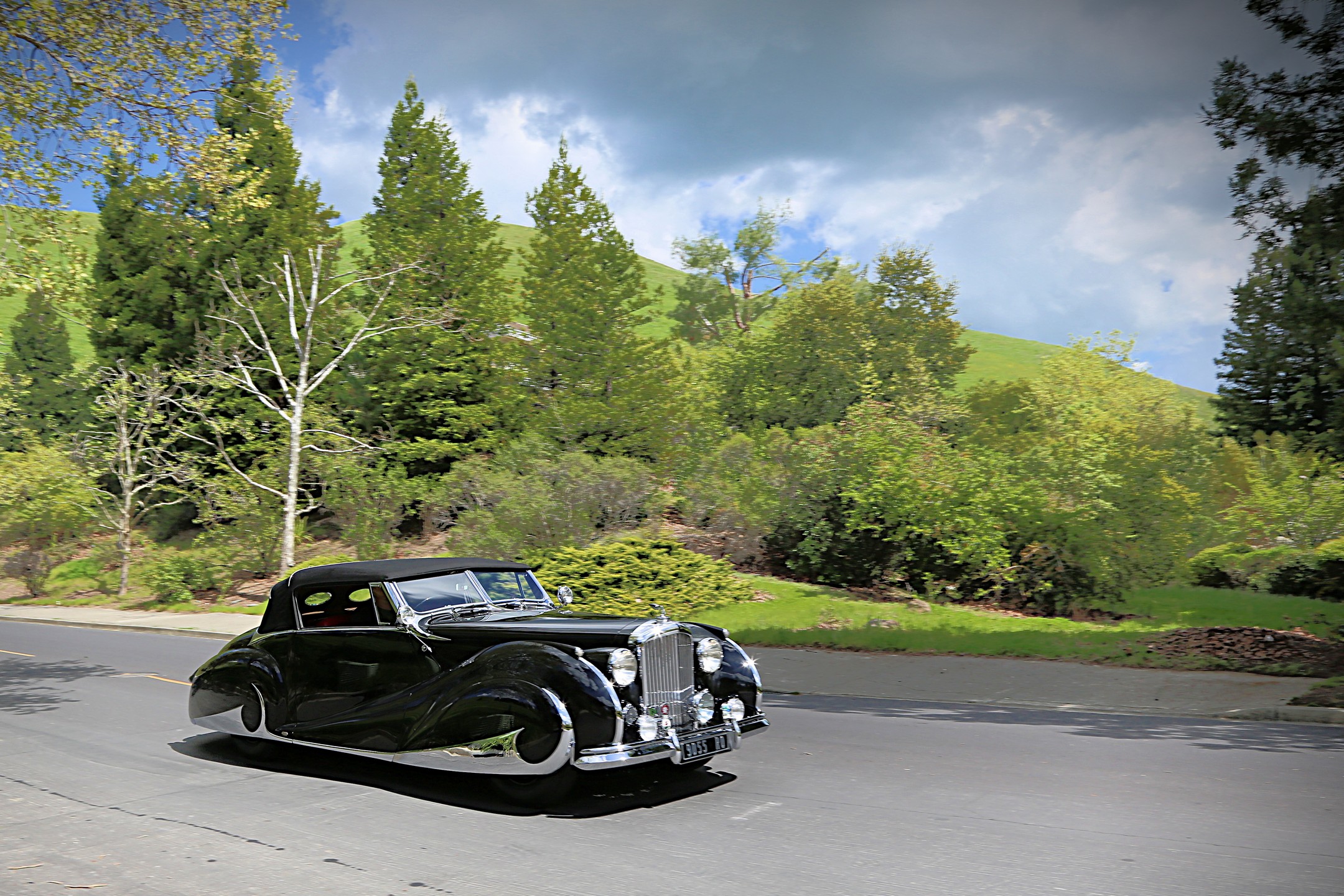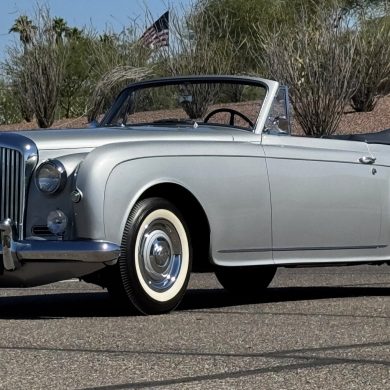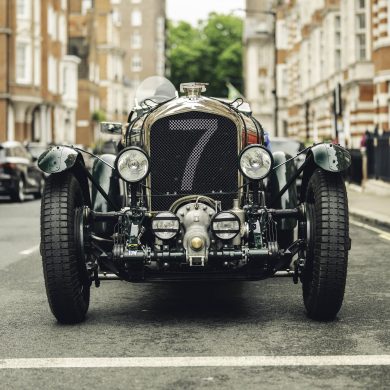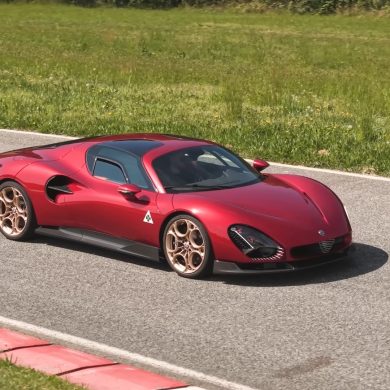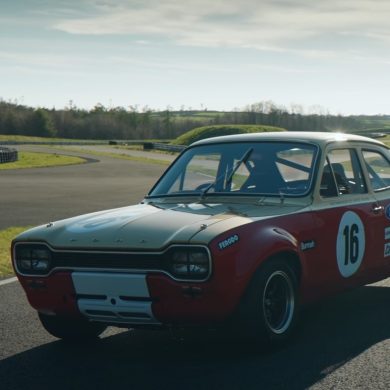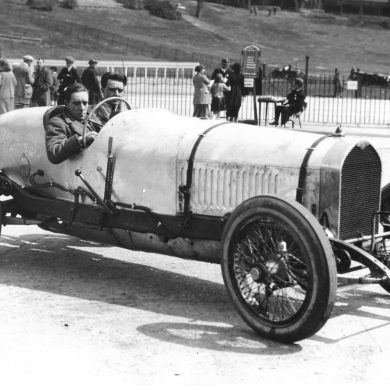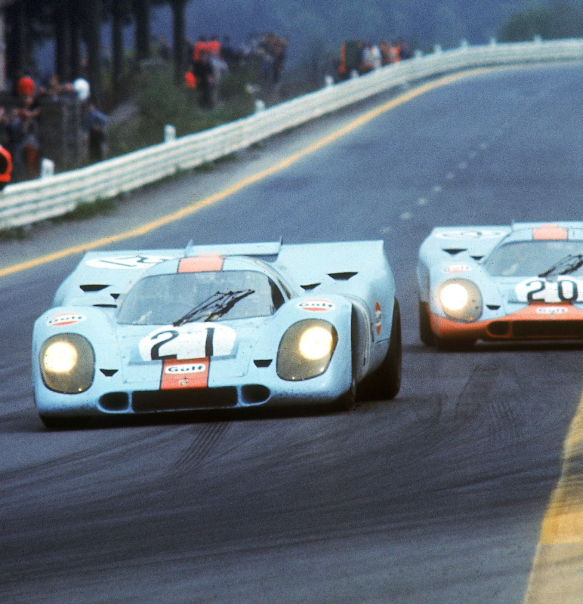With a wild and wonderful curvaceous body, this decidedly French beauty turned heads wherever she appeared. We are not speaking of Brigitte Bardot or Corinne Calvet, but this spectacular 1947 Bentley with exotic French coachwork by Franay of Paris.
Fabulous Franay
Carrosserie Franay was founded by Jean-Baptiste Franay, a saddler who had performed his training with the carriage manufacturer Henri Binder. In 1903, Franay founded his own repair business, which evolved into a manufacturer of automobile bodies. The company was based in the Paris suburb of Levallois-Perret. When World War I concluded, Marius Franay, the founder’s son, took over management of the firm.
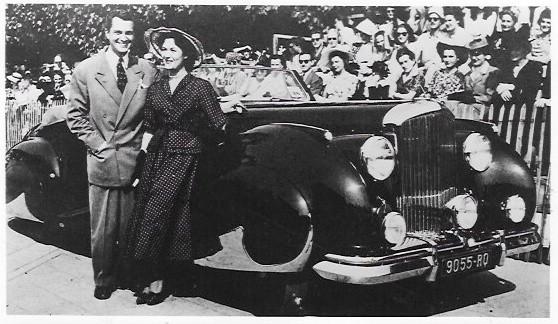
In the period between the two World Wars, Franay provided custom-made bodies for high-end makes such as Bentley, Bugatti, Delage, Delahaye, Duesenberg, Hispano-Suiza and Rolls-Royce among others.
After World War ll, Marius Franay assumed the chairmanship of the Association of French Car Body Manufacturers (Chambre Syndicale de la Carosserie Française). Among the first new cars that Franay built after the end of the war were various Rolls-Royces and Talbots. At least six drophead coupés based on the Rolls-Royce Silver Wraith and at least one sedan was constructed, primarily in 1947 and 1948. They also built special bodies for the fabulous Talbot-Lago T26 Grand Sport, all with slightly different designs.
Only 18 bodies were built on Rolls-Royce and Bentley chassis by Franay during the early postwar years. Most were unique designs, and some of them were truly spectacular, gathering attention at Concours d’Elegance events when they were new, as did our feature car. Each car featured Franay’s famous attention to fine details, flamboyant curves and decadent details for which French coachbuilding had become renowned. The newly introduced Bentley Mark VI chassis was chosen for this car’s creation.
The Bentley Mark VI
Introduced in 1946, the Bentley Mark VI used a modified version of a Rolls-Royce engine and chassis. With fine performance and handling, along with Rolls-Royce refinement, Bentley was dubbed the “Silent Sports Car.” The Mark V introduced a new chassis with independent front suspension in the late 1930s, and the new postwar Mark VI used a revised version of that chassis. Precise steering and good handling did justice to the Bentley name, while ride quality was up to Rolls-Royce standards. One hundred thirty bhp was provided by a 4.25-liter F-head version of the prewar overhead-valve six. Intake valves were overhead, while the exhaust valves were on the side.
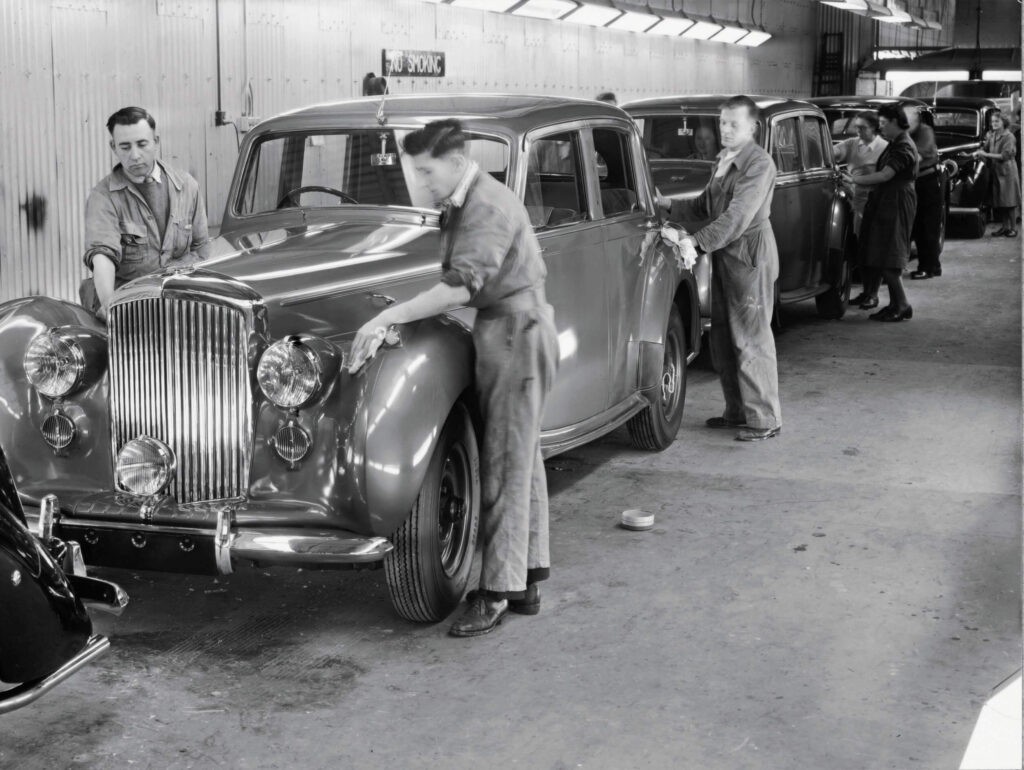
This allowed unusually large intake valves for better breathing. In 1951, Bentley enlarged the engine to 4.5-liters for 150 bhp, which increased top speed from 90 to more than 100 mph. These cars where immensely popular and were among the first Bentley cars that were available with a body constructed by the Bentley factory, as opposed to only building the running chassis at the factory with bodies fitted by Park Ward or another coach builder of the customer’s choice. These new factory-bodied cars where called the Mark VI Standard Steel Saloon. Bentley could not keep up with production orders, and some coach-built cars were created, as is the case with our feature car.
The early years of a French star with a British soul
The first owner of this Bentley, serial number B20BH, was sold new as a running chassis to a M. Edward Gudol. Gudol, a French munitions dealer, had the chassis sent to Franay with a directive to create a car that would dazzle the public and the concours judges as well. Cost was no object – he wanted a show winner.
Franay’s opulent creation was everything Gudol had hoped for. The Franay Drophead Coupe was a sensation at its public debut during the Paris Auto Show at the Grand Palais in October of 1947. The following year the Bentley was presented at the Enghien Concours d’Elegance on June 12, 1948, capturing the Grand Prix in all categories (Best of Show). A week later the car was shown at the Bois de Boulogne Concours d’Elegance in Paris, where it again won the Grand Prix in all categories
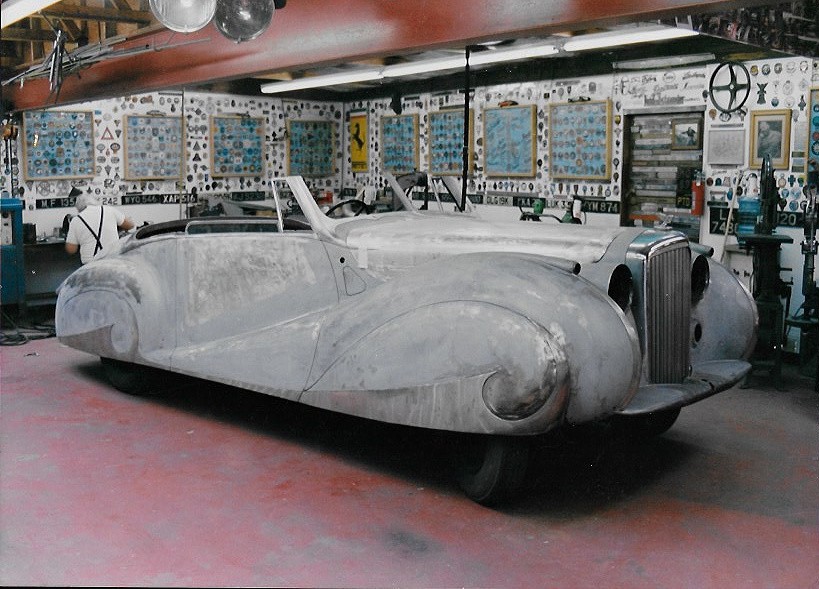
In 1951 Gudol brought the Bentley back to Franay for some enhancements that included removing the original 4 ¼ liter engine and fitting the car new with a 4 ½ liter unit and a dual exhaust system. The new engine was re-stamped and documented as such by Bentley Motors with the original engine number, B10B. Technically, it is still considered a numbers-matching car. Some small trim changes were also done, most notably was changing the original one-piece windscreen in favor of a split two-piece windscreen with tilt-out glass for interior ventilation when desired.
Later the car was acquired by a family in England, before crossing the Atlantic and landing in America. Subsequent owners included Italian-American tenor, actor and respected car enthusiast Sergio Franchi.
Noted car collector Lorin Tryon, former co-chairman of the Pebble Beach Concours d’Elegance and former president of the Blackhawk Museum, was the next owner of the Franay Bentley, retaining it for almost 30 years in unrestored condition.
Enter Gary Wales – The restoration begins
In 1979, well-known auto enthusiast Gary Wales of Woodland Hills, California, bought the car from Tryon, using a Cadillac-powered Talbot Lago as part of a trade. Gary Wales is well-known not only as a collector and Bentley enthusiast, but also as the creator of the marvelous and monstrous 100-year-old American LaFrance based “La Bestioni” series of cars seen at the many car shows he attends.
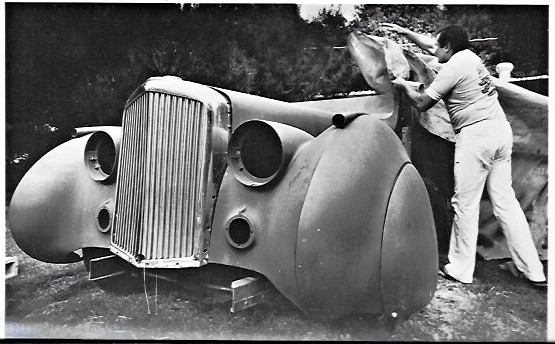
The Bentley had been in storage for many years and in need of restoration. Many of the parts where loose but still in the car, however some parts where missing. Recognizing its protentional, Gary could see through the pile of parts and dust that this Bentley was very special and worthy of restoration.
After years of research that included acquiring period photographs, digging through archives and locating parts, restoration work on the Franay Bentley began in 1988. The first part of the car to be restored was the chassis and engine. Gary knew the body and interior work would take a significant amount of time to restore, so he made the newly restored, show-quality chassis drivable, taking the car to events in Southern California to the delight of the public as he drove it around the show field to park. Now the car was in the same condition and form as it was when it had been delivered new to Franay’s workshop in 1947.
Much to his credit, Gary did not rush into the restoration of the body and interior immediately. After taking years to complete his research, he finally felt confident he could restore the car authentically. By 1991 the car was completely restored and accepted to be shown at the Pebble Beach Concours d’Elegance. The finished car was stunning.
Design and special features of the Bentley Franay Drophead Coupe
The bulbous and sweeping lines of the Franay Bentley are done in the grand French style that is most often associated with coach builders such as Saoutchik and Fagoni et Falaschi. This style of coachwork was seen mostly on French-made chassis such as Delahaye. Franay did construct bodies for other Bentleys in the 1930s and 1940s, but not as exotic as the one created for this bespoke car, B20BH.
With its long, sweeping fenders, flowing lines and skirted rear quarter panels and front fenders, the car looks like it is in motion even when standing still. The chrome trim pieces on the lower sides of the car evoke speed, movement and sleekness in an almost surrealistic way. Delicate chrome trim, as well molded in parking lamps and taillights all work to enhance the flowing design that is spectacular from any angle. The three-position convertible top features two beveled oval rear windows and side windows that are raked at the rear edge, adding to the sleek design. The spit windscreen added by Franay is trimmed elaborately in flowing chrome trim, however there is no trim at the top of the glass.
The luxurious interior is lavishly equipped with leather seats, radio, clock, compass and a Tapley gradient gauge. There is one sideways mounted collapsible jump seat behind the front seat, another clock, barometer and mirror, as well as a bar with decanters, stemware and flasks. In honor of the body’s French designer, Gary upholstered the interior with frog skins. Approximately 1,300 tiny frog hides, tanned in the Philippines, cover the seats and instrument panel. Gary likes to say “It’s my little French froggie car with my little French interior”.
A show car renaissance
After eleven years of research and restoration, the completed Franay Bentley rolled on to the lawn at Pebble Beach to compete in the Postwar European Custom Coachwork class, creating a sensation. Gary always likes to have fun, so he designed a hood ornament in the image of a frog flanked by Bentley wings, a light-hearted nod to the frog skin interior trim. He replaced with the correct winged “B” mascot in time for judging.
The car easily earned first place in its class. Since the modifications to the original design were done in period and by the same coachbuilder with correct documentation, it was determined by the judges to be authentic. The French clothed Bentley also received a second award, the coveted French Cup. When asked by the Pebble Beach judges if the frog skin upholstery material was original, Wales replied, “No, the original ones croaked.”
The judges were impressed with Gary’s car, as almost captured Best in Show honors, missing it by a mere 1/10th of a point, the closest margin in Pebble Beach Concours d’Elegance history.
During Gary’s ownership, the Bentley became a showstopper once again, racking up over 50 major awards at various Concours d’Elegance events worldwide, including Best of Show at the Royce-Royce Owners Club National Meet in 1991 as well as in 1999 when RROC honored the car again with the esteemed Top Senior Award of Royce Memorial Trophy Best of Prior Best of Show. Other notable awards include numerous Concours d’Elegance Best of Show awards and a Classic Car Club of America (CCCA) Grand Classic First Place – Senior Division (with a score of 99.75). The car has been featured in many publications, television appearances and advertisements. Franklin Mint even issued a 1:24 scale model of the Franay Bentley. Gary stated, “This car represents sixteen years of my life. It’s the finest thing I’ve ever done.”
Gary decided to give up the French-bodied Bentley in 2006, selling it at the Barrett-Jackson Palm Beach auction where it hammered for $1,728,000. Subsequently it was sold again by Barrett-Jackson Scottsdale auction as part of the Ron Pratte Collection in 2012 for a record $2,015,000. The car has been seen seldom since then and remains in excellent condition today.
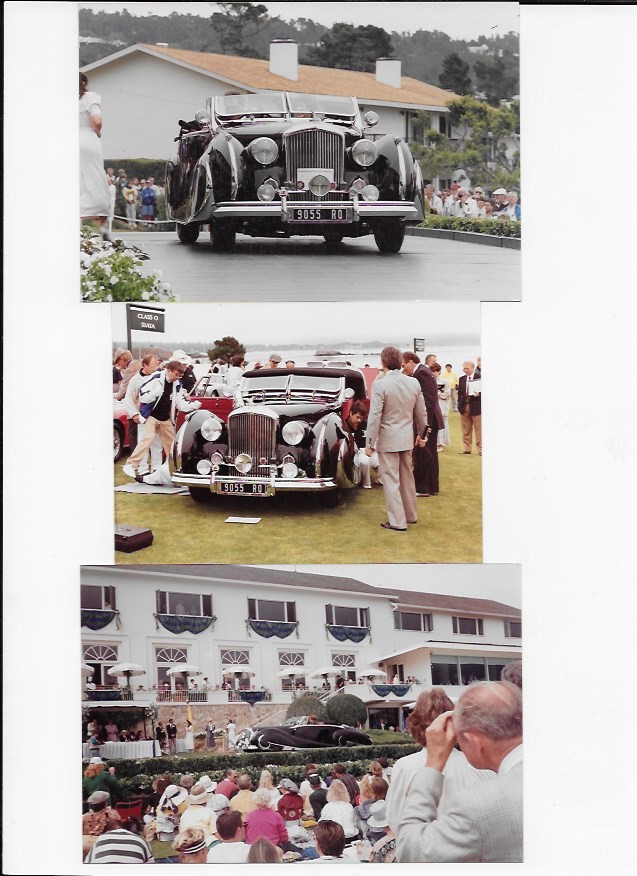
Driving impressions and author’s thoughts
When I received the call from my friends at Blackhawk Rolling Art that the famous Bentley Franay Drophead Coupe was there, I could not wait to see it.
I have driven several coach-built cars from the early postwar era and have closely examined others. Most of these cars are beautiful, but sometimes somewhat loose and full of rattles due to the fact that they were hand built in a shop using wood bracing, in addition to being 70 years old or older. Factory engineered, assembled and tested cars are usually tighter overall. This magnificent Bentley surprised me by being extremely tight, solid and rattle free. The fit and finish is exceptional and the doors shut like a bank vault. There is no doubt this is also related to both the high-quality of the restoration (now over 30 years old), and the fact that it is a Bentley Mark VI, which is an inherently well engineered and built automobile. I found the car a pleasure to operate and enjoyable to drive.
This flamboyant, curvaceous and unforgettable car has made its mark in history, not only for being quite possibly the most valuable Bentley in the world, but among the most interesting designs ever to adorn a Bentley chassis.




